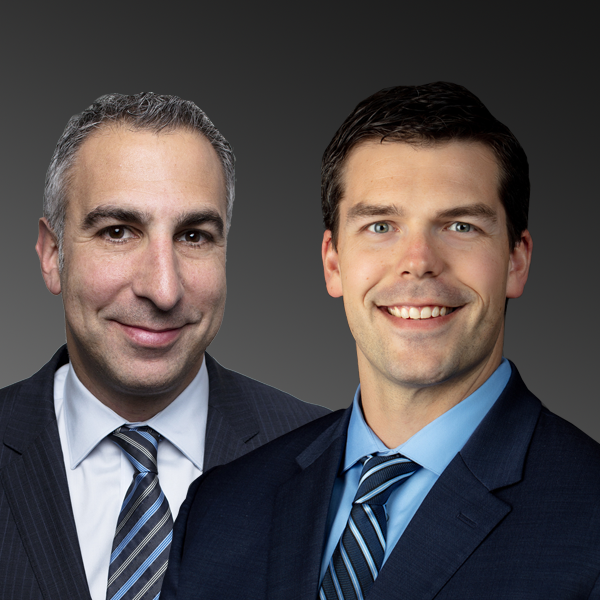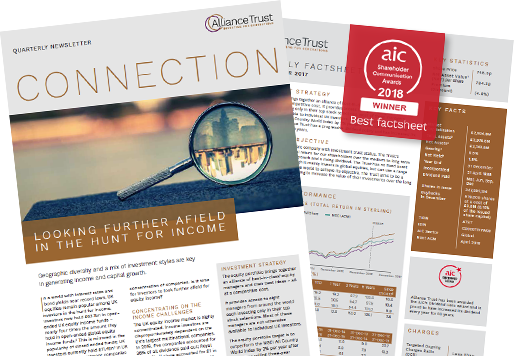Diversification has long been one of the bywords of equity investing. If you spread your cash among many stocks, sectors or regions, the impact on your overall investment of any one of them getting into difficulty is relatively low; in addition, different types of stock (or sectors, or regions) may do well at different times, helping to smooth returns.
Collective funds, of course, provide investors with a ready-diversified package of selected equities. Some hold a far greater spread of stocks than others, extending in some cases to hundreds of holdings. But the benefits of diversification don’t extend indefinitely. While owning a large number of equities certainly reduces the risk attached to any individual business, there are important caveats against spreading your investment too thinly.
The basic argument against over-diversification is that the fund manager will hold most of the stocks in the index he’s following, so in effect you are buying a closet tracker: something that looks very like that index, takes little risk and therefore adds little value, yet comes with a fee in line with active management.
However, there are other aspects to the problem. As Stuart Gray, senior director of investments at Willis Towers Watson, explains: “In any investment, you’re making decisions about the future, and the probability of getting them all right is pretty low: if you get 60% right you’re doing very well.
“But most managers don’t have the breadth of skill and company knowledge to make hundreds of good decisions, so there’s a finite scope to their potential. That’s where the argument for specialisms and a focus on areas of confidence comes in.”
The best managers can produce breathtaking outperformance even from a well-diversified fund. Ben Yearsley, investment director at Shore Financial Planning, gives the example of the value-focused contrarian legend Anthony Bolton, who ran Fidelity Special Situations for 28 years and returned over 2,900% during that time (in comparison the FTSE All Share benchmark returned 973%).1
As a general rule of thumb, in areas such as small companies, venture capital or biotech, where there is greater volatility and uncertainty, it makes sense to aim for greater diversification; that’s feasible because managers in such areas tend to be specialists, highly familiar with their investment territory.
A classic example is the small-cap expert Giles Hargreaves, whose Marlborough Special Situations returned over 2,100% (against the Investment Association UK Smaller Companies benchmark of 356%) over the 22 years he was in charge.2
However, over recent years a more concentrated investment approach has moved into the limelight, exemplified in particular by investment house Baillie Gifford.
The mainstay of the argument in favour of concentration is the opportunity for better returns: every holding in a concentrated portfolio of say 20 or 30 companies makes a material difference to the fortunes of the portfolio, for better or worse, so a skilled stock picker can potentially add huge value. Conversely, though, a single bad call can impact painfully on performance.
Yearsley makes the interesting point that outperformance is not just about the number of holdings. “The focus more recently has been on ‘active share’ rather than absolute number of stocks,” he observes. Active share shows how different a fund’s make-up is from that of its benchmark index, measured as a percentage (so a low-cost tracker fund would have an active share score of zero).
“The point is to show whether you are paying active fees for a closet tracker,” he says. “You could have a 20-stock portfolio that was the same as the biggest 20 companies in the FTSE index and you’d have a low active share; or you could have a 90-stock portfolio that was very different from the FTSE in make-up.”
Thus Baillie Gifford’s stable of funds have been so successful in part because the managers pay little heed to their benchmarks, with six of 12 investment trusts reporting an active share of 90% plus on their monthly factsheets.3
However, says Yearsley: “One obvious thing to point out is that having high or low active share or focused or diversified portfolios doesn’t in itself lead to outperformance or underperformance. It’s still down to the stockpicking.”
So how does Alliance Trust’s approach measure up? “It’s a bit complex, but basically we have diversification through 10 specialist managers, to reduce correlation and provide the benefits of a broad spread of holdings; then we have concentration through 20-stock portfolios, in order to target higher expected returns from each manager,” says Gray.
Willis Towers Watson therefore brings its skill into play in selecting the managers for the job, and in turn the managers display their expertise in picking and running with their ‘best idea’ portfolios.
“It’s worth looking at why we moved to these concentrated 20-stock bespoke portfolios in the first place, rather than staying with larger numbers of holdings,” Gray continues. “It’s because the academic research4 shows that managers that are higher up the risk spectrum through concentration or higher active positions relative to the benchmark, on average deliver higher returns over the long term.”
However, the drawback is that they’re more volatile in the short term. The danger is that people are inherently uncomfortable with downside volatility: an investor with a single 20-stock fund that hit a difficult patch might well get frustrated and sell out of it at that point, so never get to see the long-term benefits.
That’s where WTW’s diversified overview comes into play. Diversification across a number of specialist managers focusing on different investment areas and enjoying relative success at different times can help to avoid overall performance swings in the portfolio, and therefore minimise the risk of investors getting fed up with underperformance and selling.
The inevitable downside of this strategy, as Gray readily acknowledges, is that it also reduces the chance of table-topping outperformance. “Because it’s deliberately diversified, Alliance Trust’s long-term approach can look a bit boring in the short run,” he says. But on a longer perspective, “we think the Alliance Trust should be able to deliver top-decile returns - 2-3% a year above the benchmark MSCI All Country World index - but with a much lower level of volatility than a single manager’s concentrated strategy because of the level of diversification built in.”
Over the past four years, since WTW took the helm, the trust is marginally up on its benchmark. Gray admits the WTW team “would like that to be a bit better”, but points out that the drag has been largely a reflection of recent unusual market conditions.
As he explains, the WTW philosophy of skilled managers running concentrated sub-portfolios in various different areas normally means that overall performance is not seriously impacted by swings between value and growth investment styles, say, or between outperformance of the US compared with the rest of the world.
But the past three years or so have seen a small number of very large, mainly tech stocks massively outperform – and managers such as Baillie Gifford that have focused specifically on them have been able to steal a march on inherently more diversified portfolios such as Alliance Trust.
Over a 10-year timescale, though, WTW institutional portfolios with longer track records but the same philosophy and process and many of the same managers as Alliance Trust have turned out solid annualised outperformance of the market.
Of course, it’s important to emphasise that no manager can outperform all the time. “The key question is whether a manager is still making good long-term stock decisions, even if their style is out of favour,” comments Gray.
He offers Nick Train, manager of the £2 billion Finsbury Growth and Income trust, as an example of a highly skilled manager whose long-term quality growth style has failed to keep up with peers or the benchmarks over the past year.
“Investors will stick with him for a long time, but that’s rare. Typically they’ll sell, destroying long-term value,” he says. “I like to think Alliance Trust is saving people from themselves through the diversification provided by 10 concentrated portfolios – keeping volatility to a level they can tolerate, so they continue to hold and get the long-term benefits.
Ben Yearsley tends to prefer concentrated funds as a general rule: “I like managers having conviction and being able to run their winners,” he explains. “And I like Alliance Trust’s new approach for that reason. WTW lets the managers choose a handful of stocks and then is patient with them - ideally looking to stick with those managers for the next decade.”
The bottom line is that concentration and diversification both bring powerful benefits for investors. As Gray stresses, good investing should not be a matter of choosing between them, but rather of finding the best way to harness the strengths of both higher added value and lower volatility.
Past performance is not a reliable indicator of future returns. This material contains the opinions of the manager and such opinions are subject to change without notice. Forecasts, estimates and certain information contained herein should not be considered as investment advice or a recommendation of any particular security, strategy or investment product. Information contained herein has been obtained from sources believed to be reliable, but not guaranteed.
TWIM is the appointed Alternative Investment Fund Manager of Alliance Trust plc. Alliance Trust plc is a listed UK investment trust and is not authorised and regulated by the Financial Conduct Authority.
Read more investment expertise






